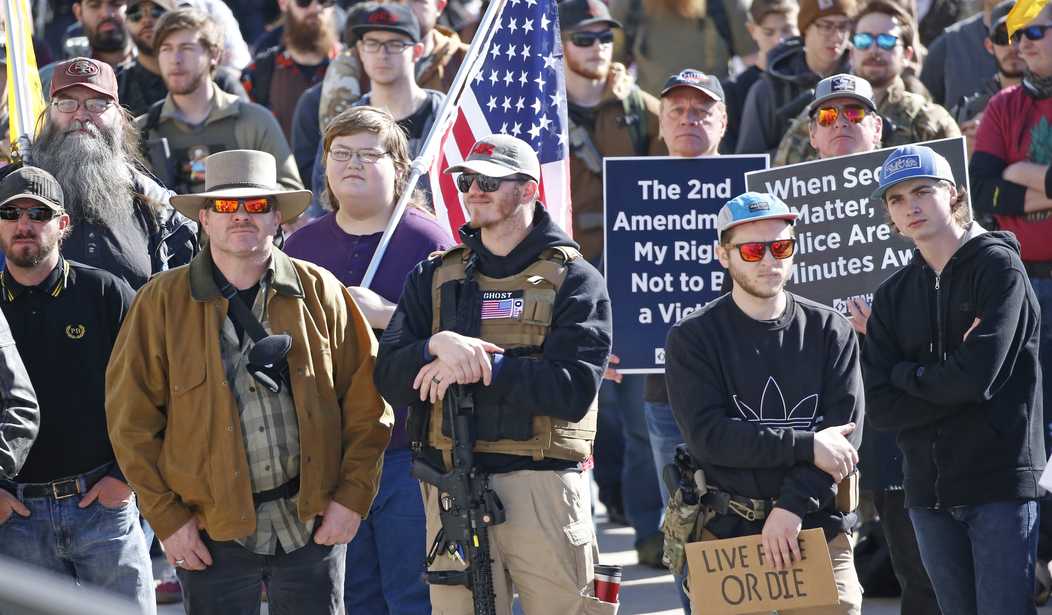As has been reported here earlier, the Supreme Court today agreed to hear the case of New York State Rifle & Pistol Association, Inc. v. Corlett, a major 2nd Amendment case that will address the question:
Whether the state’s denial of Petitioner’s applications for Concealed-Carry Licenses for Self-Defense violated the Second Amendment?
Interestingly, that is not the question as posed in the Petition. In the Petition the Court was asked to answer the following question:
Whether the Second Amendment allows the government to prohibit ordinary lawabiding citizens from carrying handguns outside the home for self-defense?
Parsing these types of announcements from the Court is an exercise in “tea leaf reading”. It seems to me, however, that the question as posed in the Petition asked for an interpretation of the breadth of the Second Amendment’s pre-emption of state regulation, whereas the question as reformulated by the Court focuses on what New York has done and whether that act violates the Second Amendment — a question that can be answered without sweeping away all other state-imposed limitations on gun ownership and possession.
The language chosen by the Court suggests a narrower analysis of the specific New York’s firearm permitting process, and seems to focus on the specific applications made by the Petitioners within the framework of the statutory limitations created by New York going back to a point in time prior to the adoption of the Second Amendment.
Interestingly, there is no meaningful lower court opinion that is the subject of the Court’s review in Corlett, so the record seems quite limited. The Petitioners — originally the Plaintiffs in the federal district court case — had their complaint dismissed by the district court on the basis that controlling precedent existed in the Second Circuit since that Court had already decided in 2012 on nearly identical facts that New York’s regulatory processes did not violate the Second Amendment. In that earlier case, Kachalsky v. County of Westchester, the Second Circuit was called upon to decide whether the Supreme Court’s decision in District of Columbia v. Heller required that the New York regulatory statutes be invalidated. In deciding Kachalsky, the Second Circuit held that Heller concerned only an outright ban on gun ownership for handguns possessed in the home for self-defense purposes only. Because of the limited basis for the ruling, the Second Circuit held that broader questions of gun ownership and possession rights were left unresolved by Heller, and ultimately decided that the New York statute requiring a permitting process for carrying a concealed firearm out in the public for purposes of self-defense did not violate the Second Amendment.
The Second Circuit in Corlett issued only a brief order affirming the outcome in the district court on the basis that any other outcome would have been contrary to Kachalsky which remains good law. As a result, what the Supreme Court is really taking up for review is the Second Circuit opinion from Kachalsky decided in 2012.
As a general matter, the New York permitting statute requires an applicant to provide a reason — referred to as “proper cause” — for wanting to carry a firearm outside the home. Common reasons offered include hunting or going to a gun range for target practice. A third recognized reason constituting “proper cause” is for purposes of “self-defense.” But in order to establish “proper cause” on the basis of “self-defense,” the applicant must “demonstrate a special need for self-protection distinguishable from that of the general community or of persons engaged in the same profession.” New York does not recognize a generalized “right” to self-defense as expressed in the Consitution through the Second Amendment.
The Kachalsky Court noted that the regulations in New York have many similarities to statutory provisions in many other states which have been upheld on Second Amendment challenges for decades. The Court simply moved on from and past the Supreme Court’s decision in Heller by noting that the “proper cause” provision in the New York statute showed that there was no complete ban on firearms possession as had been the case in Heller.
One issue that the Court left unresolved in Heller that might be resolved in Corlett is the “standard of review” that lower courts should apply to state restrictions on firearm ownership and possession. The Court in Heller found that the complete ban on handgun possession under the DC statute would have failed any “standard of review” so it was not necessary for the Court to determine which standard would best apply. This involves the question of whether the statute under review should be subjected to “strict scrutiny,” “rational basis,” or some intermediate level of court review in evaluating the extent to which it burdens constitutional rights in pursuit of the governmental interest.
In Kachalsky, the Second Circuit did not apply the most severe standard of review — “strict scrutiny” — because the statute did not reach the “core” Second Amendment right identified by the Supreme Court in Heller — the right to possess a firearm for self-defense in one’s home.
Deciding the applicable “standard of review” — particularly if the Court decides that “strict scrutiny” is the proper standard — would then be a basis to send the case back to the Second Circuit without addressing the foundational issue of how broad are the protections afforded by the Second Amendment. It would also cause a likely “reset” of other cases recently decided or currently pending in other circuit courts. A decision establishing the “standard of review” would “rewrite the rules” in a meaningful fashion on how lower courts should evaluate state restrictions on gun ownership and possession. Such a “reset” of lower court cases would allow the Supreme Court to again put off resolving the more controversial issues about how far the Second Amendment should reach in prohibiting state regulation of firearms.














Join the conversation as a VIP Member